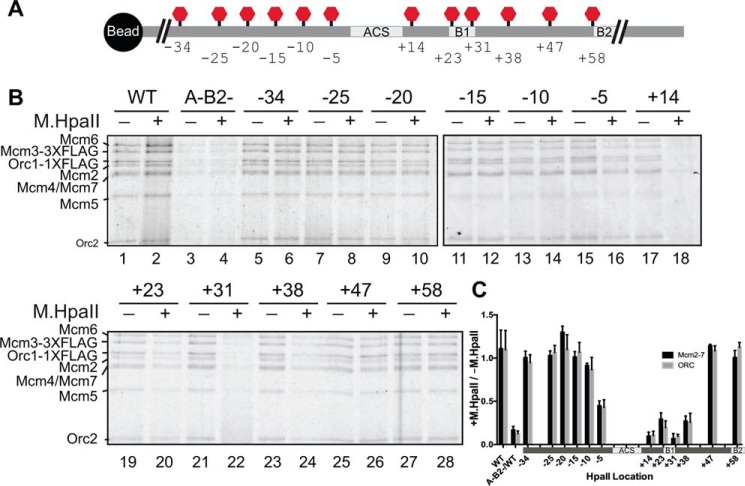Figure 2.
M.HpaII adducts at the −5 through +38 locations affect both ORC and Mcm2-7 association in ATPγS. A, diagram showing the relative locations of the M.HpaII consensus sequence in the 12 different templates tested for OCCM formation. Locations are the same as those shown in Fig. 1. Because TALE binding did not aid OCCM formation (Fig. S5), it was not included. B, effect of M.HpaII-cross-linked templates on OCCM complex formation in ATPγS. Templates were either treated with M.HpaII (+) or left untreated (−) as indicated. The location of the 5FdC-modified M.HpaII recognition sequence is noted above each pair of lanes. The associated proteins were detected by fluorescent protein staining. The Mcm2-7/Orc1 and Orc2 bands are marked. C, quantitation of different sites of M.HpaII cross-linking on Mcm2-7 and Orc2 origin DNA association in the presence of ATPγS. In each case, the relative amount of Mcm2-7 and Orc2 association are reported as the fraction of DNA association for M.HpaII-treated templates (+) relative to untreated templates (−). Error bars are the standard deviation from the mean calculated for three independent experiments.

